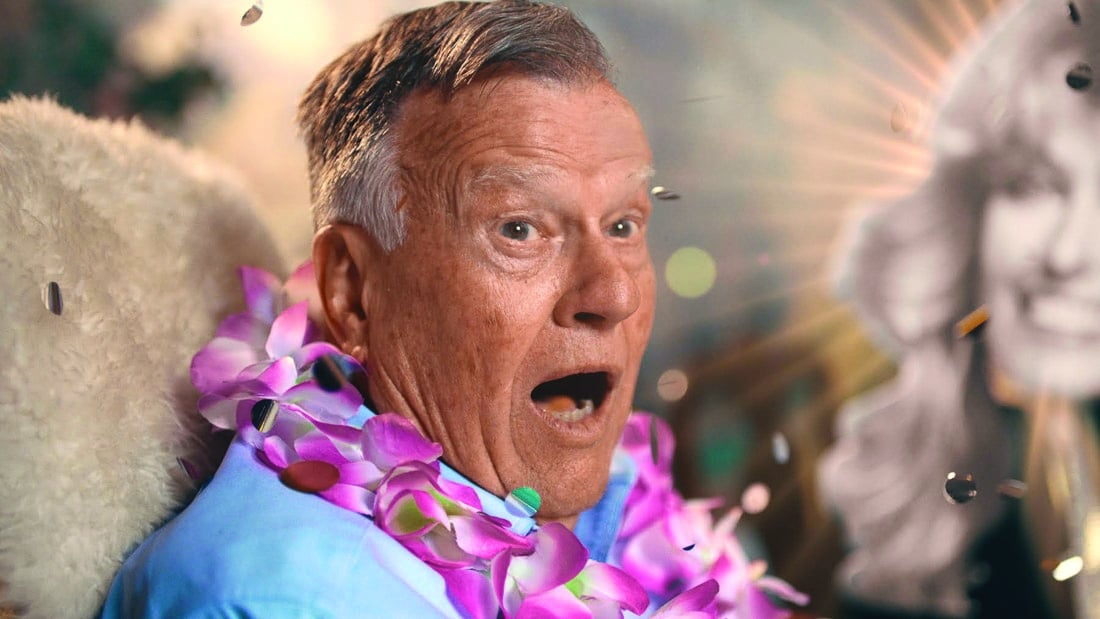
Mirth and Death: Dick Johnson Is Dead
Director-cinematographer Kirsten Johnson, ASC aims for “new cinematic territory” with this uniquely personal hybrid documentary.
Editor’s Note: Kirsten Johnson was welcomed into ASC membership upon the publication of this article in the December 2020 issue of AC magazine. We have added her credential in this web version of the story.
“I’m trying to break this form, to stretch cinema’s capacity,” director-cinematographer Kirsten Johnson, ASC says of her latest feature, Dick Johnson Is Dead. The work defies classification; it is a hybrid documentary, comedy, memoir, and meditation on death — a meta film about filmmaking that called for a cadre of fellow cinematographers to assist. At its core, it’s about the dementia of a loved one: Dick Johnson, the filmmaker’s father.
Kirsten Johnson had been down this road before, as her mother had died of Alzheimer’s disease some years earlier. The fact that there was no motion-picture footage of her mother, a dynamic woman, in her prime spurred Johnson to make a movie with her father before it was too late. She started shooting in 2016, when early-stage dementia forced him to close his psychiatry practice in Seattle and move to New York City to live with her. And she kept shooting until January 2020, right before the movie’s premiere at Sundance, where it won a Special Jury Award for Innovation in Nonfiction Storytelling.
The death in the title is fictional, and it is depicted in a number of ways. With the aid of stunt performers and movie magic, Johnson had her father enact his demise multiple times: a tumble down the stairs, an air-conditioner landing on his head, a wooden plank at a construction site bonking him in the neck. It was all a type of desensitization training for the filmmaker. “The stunts were many things,” she says. “They’re practice. They’re pre-traumatic therapy.” They were also a family project that she and her father could work on together; she even engaged her two kids, who chimed in on fantasy ways to finish off Grandpa.
But shooting these fictional bits with a subject in mental decline meant that the feature’s production was as unpredictable as its form. Careful planning inevitably falls by the wayside when your lead can’t hit his marks, repeat the same action twice or remember directions. But Johnson, a documentary pro with more than 50 films under her belt as principal cinematographer — including the award-winning Cameraperson, which she directed — knew how to roll with the punches.
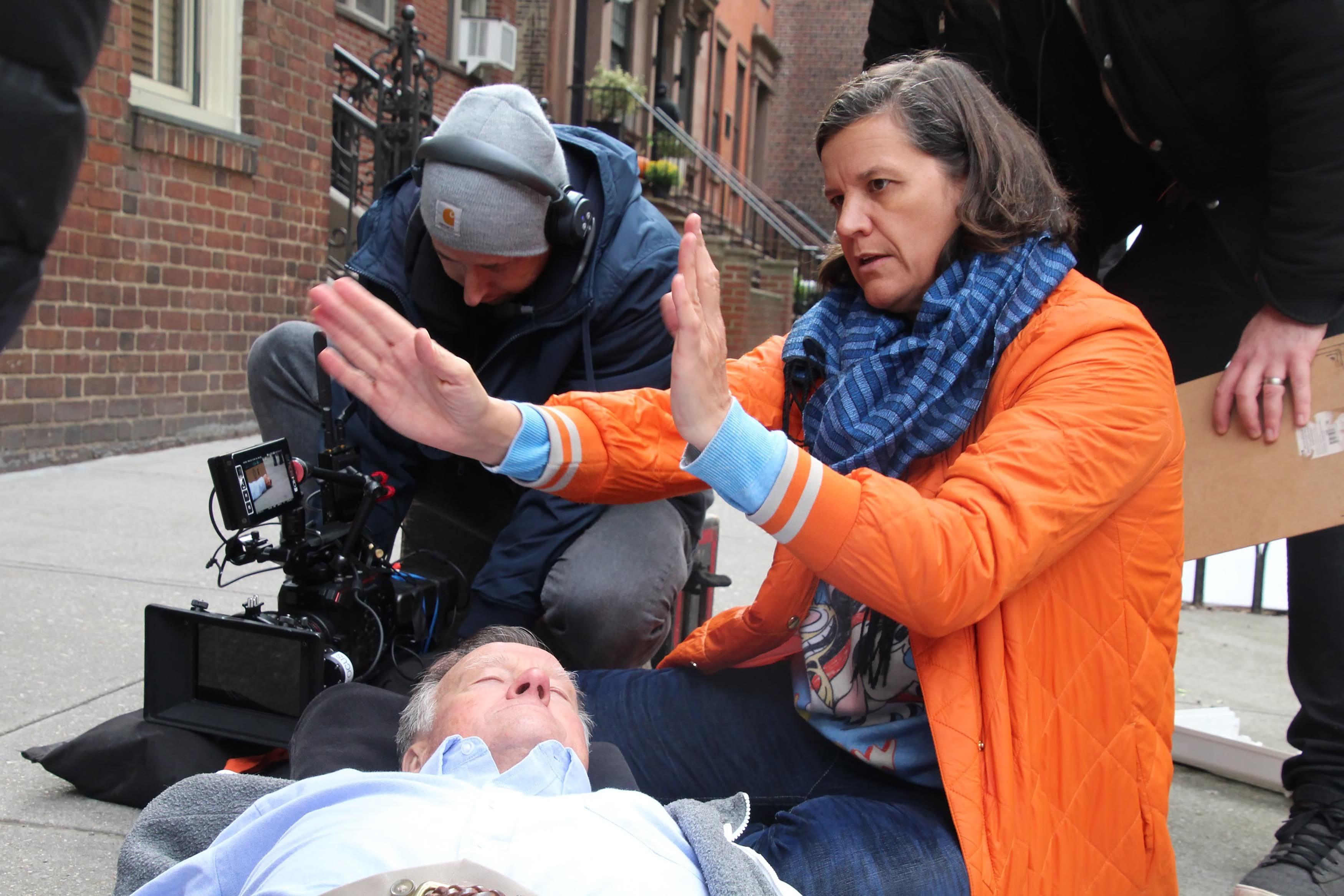
“What was so empowering about this shoot was that we figured out a methodology by which I could shoot fictional material using my resources as a documentarian,” she says. “With this film, we were deeply interested in exploring the very nature of the ‘unexpected and the unpredictable.’ I wasn’t interested in chaos, though — it was our priority to build a process that would allow each member of the team (including my dad) to feel seen, valued and respected. Instead of imagining that I can control death or moviemaking or time itself — how could we harness the powerful energy of respecting other people, respecting moviemaking, respecting death’s power, respecting cinema’s strange relationship to time, all the while accepting our own incapacity to predict what will happen? So the cinematic imagination of the film emerged out of the process of collaboration itself. We knew that we would have to toggle back and forth between different stages of the process — editing, re-editing, sound-mixing — early and often. We didn’t put any limits on it, except that I really wanted there to be moments in the film where it’s impossible not to laugh! I was deadly serious about the idea that we were trying to make a film which would allow my father to live forever, and at the same time I know that this was doomed for failure.”
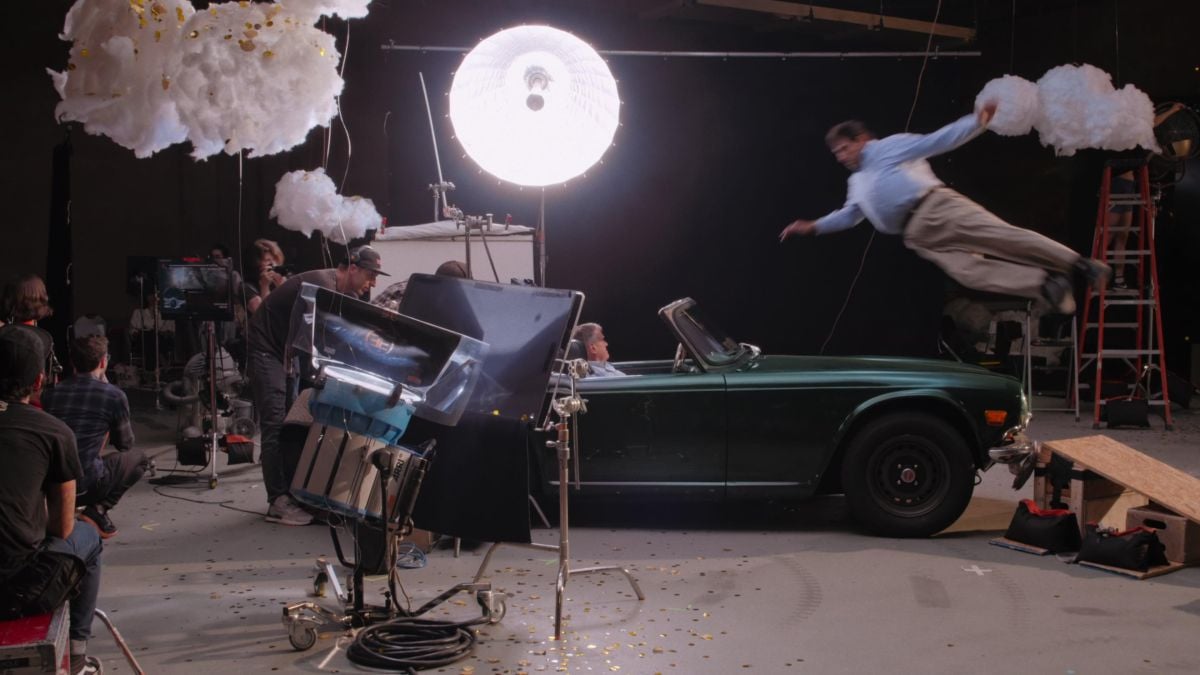
Structurally, the movie is like a Russian nesting doll. Johnson shot the core observational footage on her newly acquired Panasonic AU-EVA1 and Canon Cine Prime lenses. (“It’s the first time in my career that I have my own prime lenses. It makes me so happy.”) The next layer comprised the death scenes, including Heaven and Hell scenes, which were captured and lit by director of photography John “JP” Wakayama Carey. Then came a layer of behind-the-scenes footage, which showed the artifice of it all: the stunts, the Heaven and Hell soundstage shoots and a mock funeral, shot by a wide range of cinematographers, which included veteran documentary camera people John Russell Foster, Rick Siegel, Nadia Hallgren, Martina Radwan, Andre Lambertson, and Johnson herself — as well as specialized Phantom camera operators John Benam and Nick Midwig.
Notes Johnson, “All of these layers emerged out of examining the observational documentary footage in the edit room, and then imagining the unimaginable — the ‘moment of death.’ I thought of all these binaries we assert and boundaries we place between states — life/death, present/future, documentary/fiction, the serious/the transgressive, laughter/tears, the controlled/the uncontrollable — and we set about trying to see how cinematic language might be flexible enough for us to expand the ‘no-man’s land’ between all of those contrasting states. Could we build a cinema which could create a cathartic state in which laughing and crying would be simultaneous?”
Dick Johnson was still in Seattle and in pretty good shape when the funeral was staged. (His daughter says she originally intended to start the movie with his mock funeral and end it with his real one, but he is still going strong four years later.) His friends and patients gathered to mourn and recollect while father and daughter eavesdropped from the church lobby. When the testimonies were over, Dick entered the nave and walked down the aisle, shaking hands with the tearful crowd.
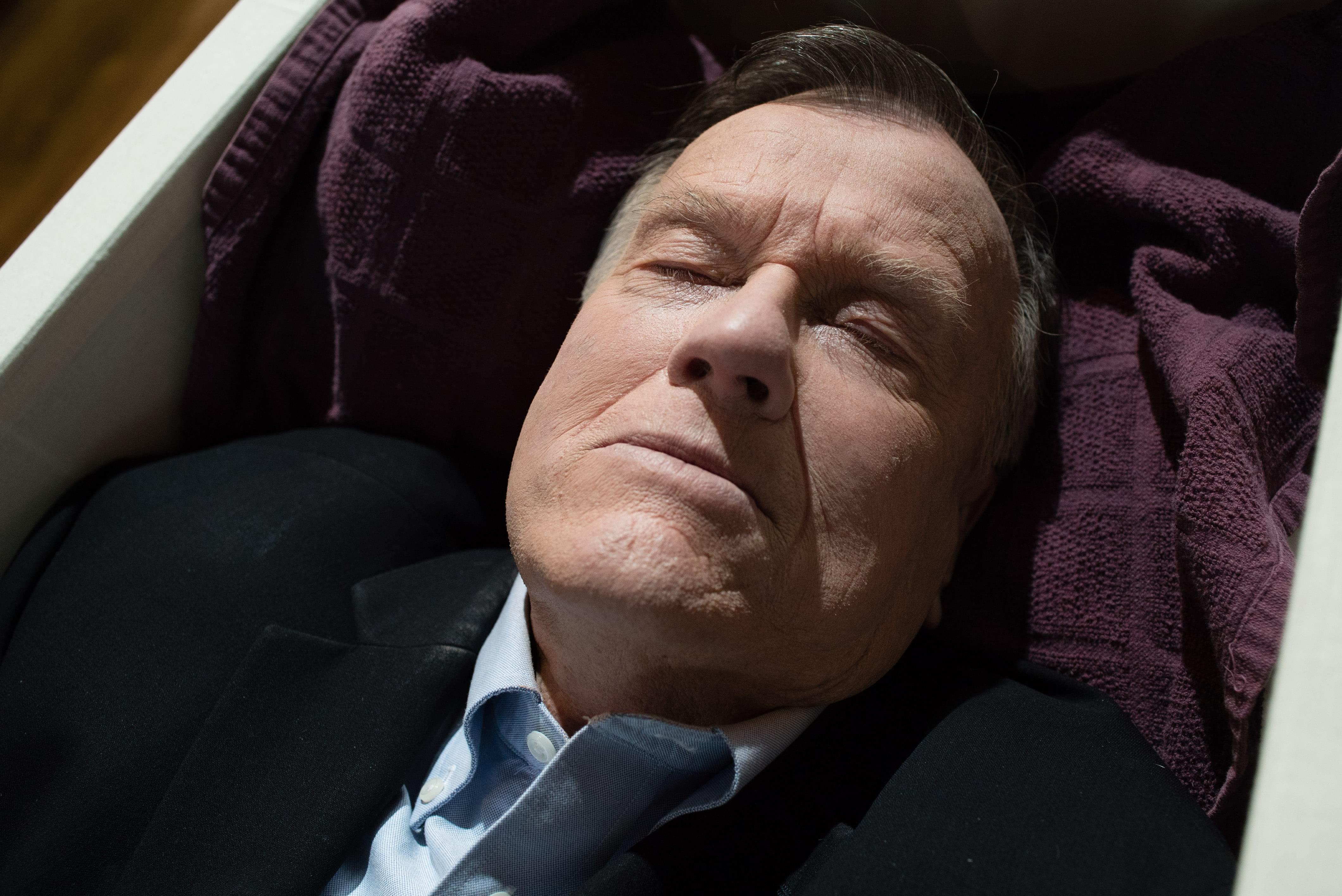
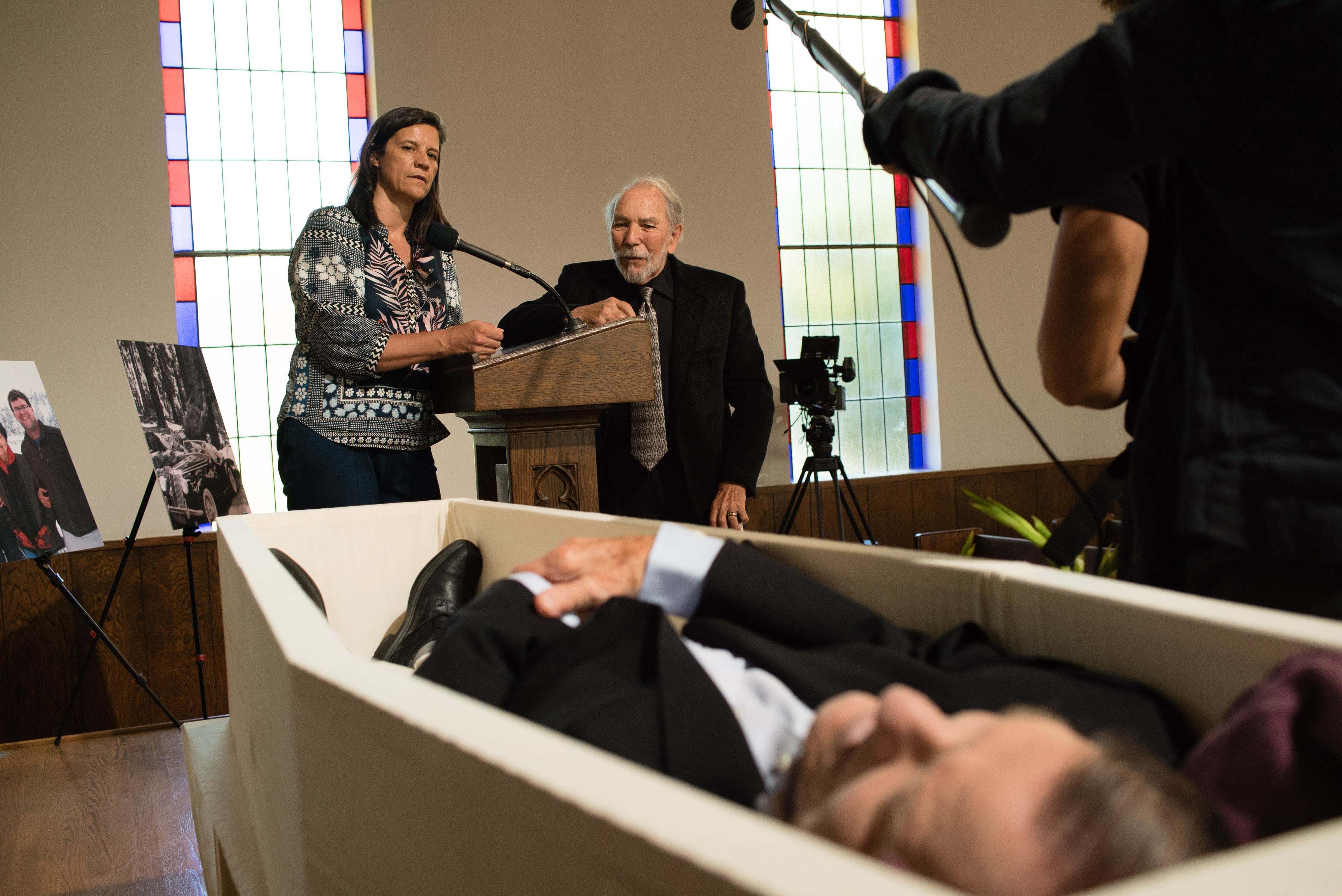
Including herself, Johnson had five cinematographers covering the funeral — with Emmy-winning cinematographer Siegel overseeing the team — using multiple Panasonic VariCams and a couple of the smaller AU-EVA1 cameras. One operator was Hallgren, “an extraordinary observational-documentary cameraperson, and one of my closest friends, whom I would trust with my life,” says Johnson. Hallgren got a bittersweet shot of Dick coming down the aisle. “She just came to the back of the church unprompted,” Johnson recalls. “She knew I needed not to have a camera in my hands at that moment.” She also praises Foster for getting the shot of Dick’s best friend, Ray, sobbing in the corner. “It was totally off the book for the fictional shoot. But we had discussed beforehand that I wanted all of the camera people to feel empowered to shoot whatever moved them, and John totally came through for the film by finding Ray in that moment and holding the shot as long as he did.” The entire church sequence, she notes, “was observational-documentary people at their strongest. It was terribly moving because I was in everyone’s hands. I had no idea how the whole experience would hit me emotionally, and I wanted to be present for my dad and the congregants, but I knew that with this group of camerapeople, whom I trusted so much, that I could experience my father’s funeral for real and not have a moment where I was wondering, ‘Do we have the shot?’”
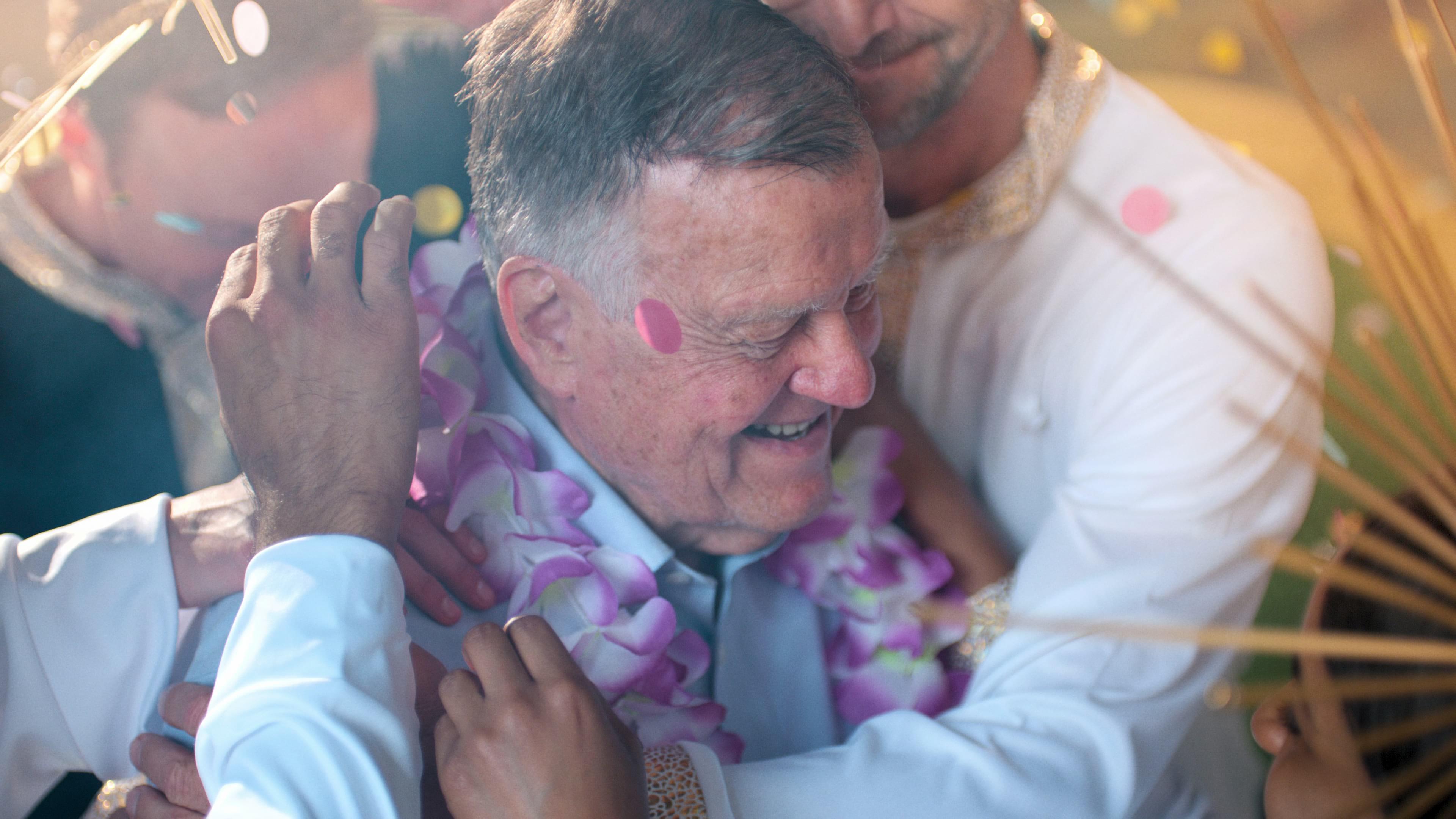
The production’s most elaborate foray into fiction are the scenes in Heaven. Johnson’s family were Seventh-Day Adventists, and she spent much of her childhood thinking hard about Heaven. “I was dismayed by the prospect of it being boring,” she recounts. “Then I got onto the idea that it might be interesting if you could meet interesting people there.” The Heaven she created for this production is populated by figures whom Johnson sees as artists who have succeeded in translating their own pain into art: Buster Keaton, Frederick Douglass, Bruce Lee, Frida Kahlo, Sigmund Freud, Billie Holiday, Farrah Fawcett. There’s also Jesus performing a movie miracle on Dick’s deformed toes. Heaven also contains Dick’s beloved chocolate, the car he can no longer drive, and his clarinet. “He hadn’t played in years, but he stood up and started swinging, playing this clarinet when we blasted Benny Goodman,” Johnson recalls, awed by the capabilities that can reemerge despite dementia.
“I thought of Heaven as a live collage,” says Johnson, who took inspiration from artists such as Max Ernst and Saul Steinberg. Steinberg’s bag masks in particular triggered the idea for the paper masks worn by the various characters, including Dick and his late wife dancing, looking as they did on their wedding day. Collage, after all, was part and parcel of her approach: “In the film, I’m recombining or ‘(Young!) Frankensteining’ my father back together as the dementia pulls him apart.”
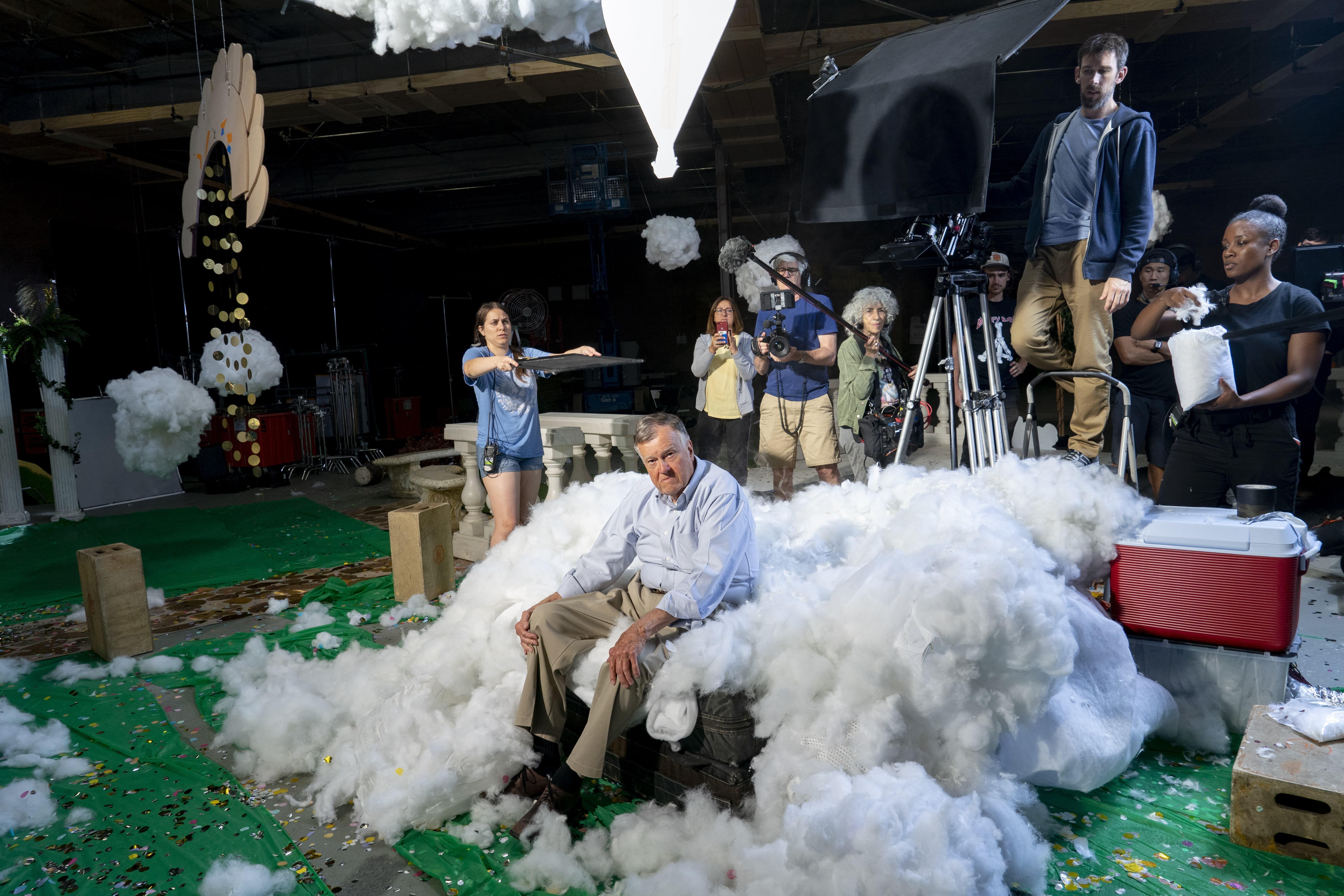
The Heaven sequences required a three-day shoot in August 2019. By then, Dick’s dementia had progressed to the point where he was often stuck in a loop, repeating the same thing over and over. Shooting in slow motion was one way around that, allowing Kirsten Johnson to stretch time and expand the time and continuity of her father’s reactions to things. “Because my father’s dementia had advanced so much, the slow motion became a necessity,” she says. “Then we asked, ‘What’s going to work well in slow motion?’ That’s how we arrived at feathers, bubbles and sequins.”
For the Heaven shoot, “we had this big, wonderful crew and all these specialized talents. There were two exceptionally experienced Phantom operators, John Benam and Nick Midwig; choreographer Adam Fleming; costume designer William Mellette; production designer Nathan Hong Fisher and art director Jane Ji; stunt coordinator Mike Hilow; actors; dancers; and an incredibly patient stand-in for my dad, Brett Eidman. But none of us knew what my father could or would do at any moment. Everyone was organized and prepped and ready to come in with their elements, but no one knew how the elements would look together or how it would function. The first assistant director, Kate Branom, was like a brilliant symphony conductor.” Again, they adopted a ready-for-anything documentary ethos when shooting this most fictional part of the movie. “The constraints of my dad’s dementia pushed us into uncharted cinematic territory — we were lighting and filming and choreographing dance numbers that would play in slow motion to music that didn’t exist yet. Instead of previsualizing everything, we were assembling relationships of necessities — if ‘this,’ then ‘that,’ but we won’t know what ‘this’ is until it happens. What I did know was that I wanted Heaven to be glorious and exuberant and wacky!”
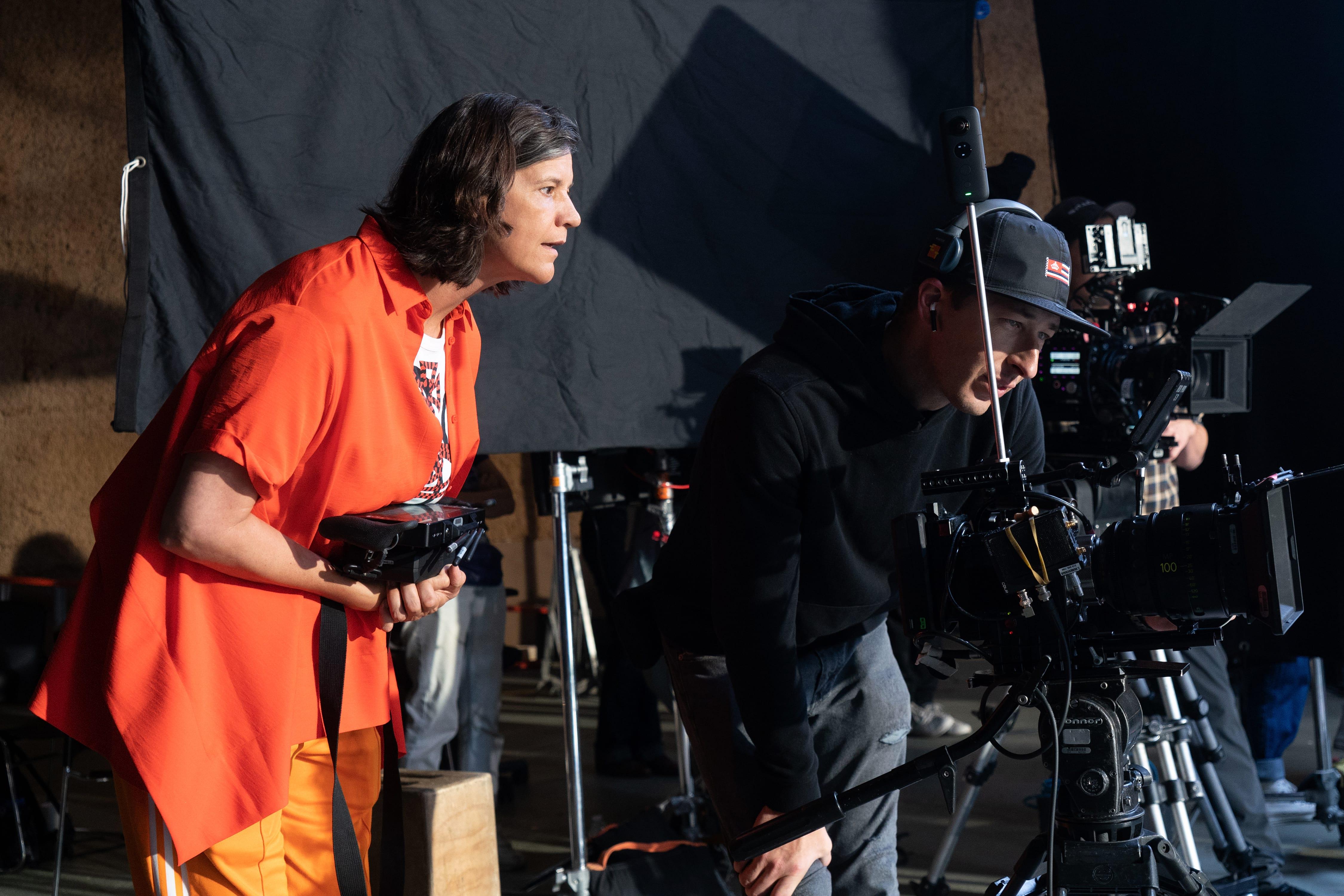
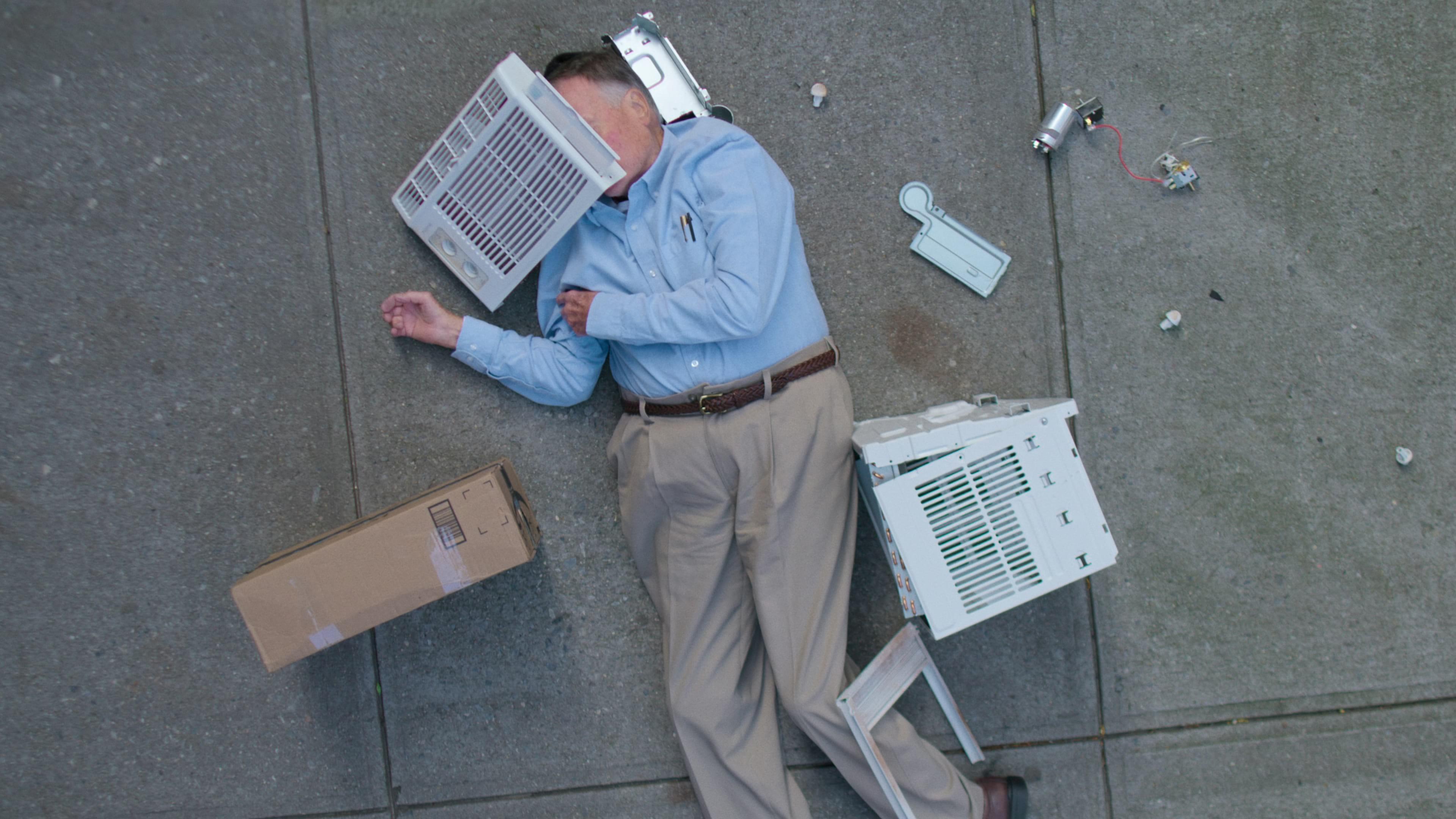
Johnson gives special props to Chris Cruz, 1st AC on the Phantom Flex4K. “It’s incredibly difficult to follow-focus with a shallow lens in slow motion, period, even if someone is hitting their marks,” Johnson says. “We were shooting with long lenses at 600 to 1,000 fps. My father was hitting no marks.” Despite her cinematography experience, Johnson didn’t realize what a herculean task that was on the high-speed camera. “I thought I was pretty well aware of what I was asking of everyone, but then there was a certain moment when JP said, ‘Do you understand what Chris is doing right now?’” From then on, “seeing Chris get just a moment in focus, like when Dad’s falling back into the feathers and you just catch his hand in focus, was a total victory. We could have created that whole world of Heaven, shot all of that, and had none of it in focus.
“It reminds us that you can have 50 people on set, but it all comes down to one person’s intuitive capacity to stay with focus,” she adds. “And focus was a metaphor for this entire project — what we can and can’t look at, what we can and can’t catch.
“We’re entering new territories of cinematic language, and this has to do with the fact that people who haven’t been allowed into the world of filmmaking are finally getting a chance at it. These realities are absolutely connected. It’s not like, ‘Oh, this is a new wave of hybridity.’ This is because there are more people making films who have been disenfranchised for too long — because there are more people of color making films, because there are more women making films, the glorious list goes on. We’re entering a long-overdue and long-fought-for phase that marks a transformation of what the history of cinema has been. It’s going to look different. We can all celebrate that there are more films coming that will be ‘like nothing we’ve ever seen before!’ Hallelujah.
“Whatever I do as a filmmaker, I want to search my way into new territory,” she adds, “and this film is an attempt to directly address cinema’s very powerful capacities for time travel. My wish is to make films I can’t see coming — just like the future which we can never see coming. My hope is that as my films emerge, they’ll be almost completely unrecognizable to me and they’ll be a part of moving this craft into unfamiliar languages. The people I work with all want cinema to stay vital, and in order to make it that, we have to push the form into territories that challenge us to our core. That’s what I’m trying to do.”
The cinematographer was later interviewed about the project for this episode of ASC Clubhouse Conversations:






